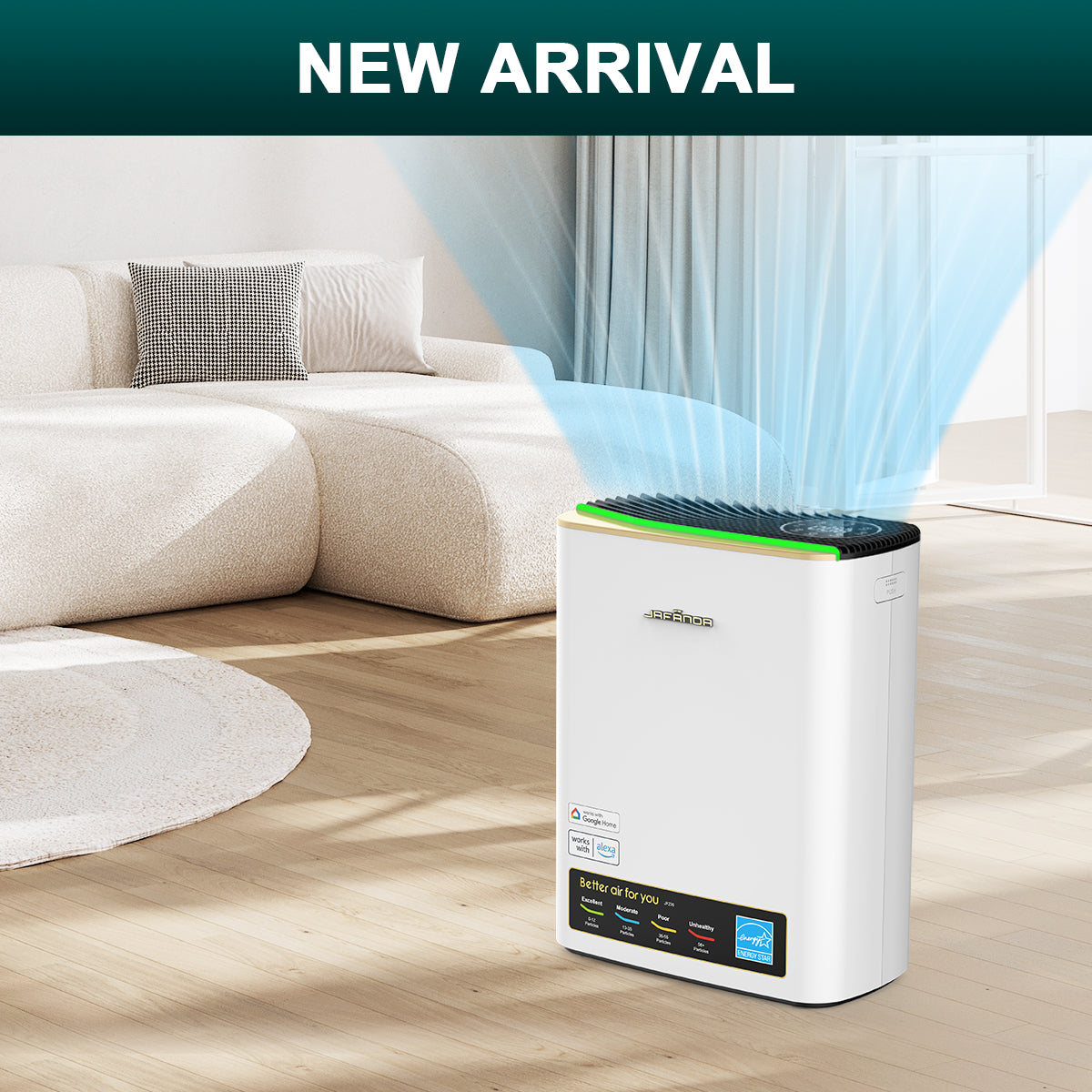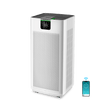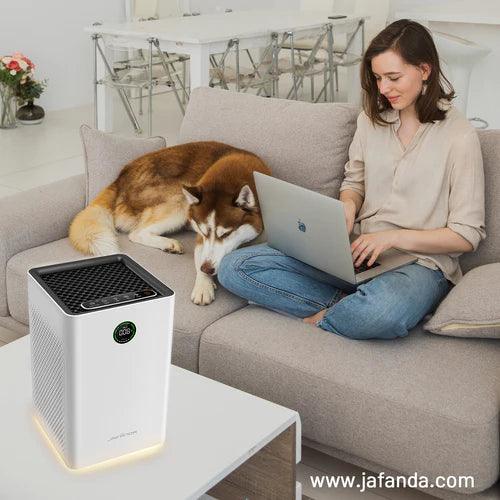Introduction: Keeping pets is an enjoyable and fulfilling experience, yet pet odors can become a vexing problem for pet-owning households. Odors not only affect indoor air quality but can also negatively impact the health of inhabitants. This article will delve into the sources and components of pet odors and discuss effective solutions to tackle pet odor issues using specialized odor-eliminating filters combined with HEPA filters and activated carbon filters.
Sources and Components of Pet Odor: Pet odors mainly originate from gases exhaled and excreted by pets, pet sweat, glandular secretions from fur, urine, and oral secretions. These secretions contain volatile components such as ammonia, organic amines, methanethiol, sulfides, and volatile organic compounds (VOCs), which cause odors in the air. Ammonia and organic amines are odoriferous substances produced by urine decomposition, while sulfides are produced by bacterial metabolism in pet fur and skin secretions. The accumulation and evaporation of these substances lead to the unpleasant odor pervading the indoor environment.
Effective Solutions to Pet Odor: Air Purifiers with Odor-Eliminating Filters: Air purifiers equipped with filters specially designed to eliminate pet odors are key to the solution. These materials typically consist of activated carbon and other adsorbents that effectively adsorb and neutralize odor components. Activated carbon boasts excellent adsorption capacity, capturing ammonia, organic amines, methanethiol, and other volatile organic compounds, thereby reducing the concentration of indoor odors.
Air Purifiers with HEPA Filters: HEPA (High Efficiency Particulate Air) filters are another essential component of air purifiers, capable of effectively removing pet hair, dust, and other minute particles. This type of filter captures particles larger than 0.3 microns, effectively purifying both visible and invisible substances in the air and improving indoor air quality.
Regular Cleaning of Pets and Indoor Environment: Regular grooming and cleaning of pets, including cleaning pet beds and nests and using professional pet cleaning products, can effectively reduce the production and accumulation of pet odors. Meanwhile, maintaining a clean and tidy indoor environment, with regular cleaning of carpets, furniture, and floors, also helps to minimize odor propagation.
The Use of Air Purifiers with Specialized Odor-eliminating Filters, HEPA Filters, and Activated Carbon Filters as Effective Solutions: Air purifiers incorporating odor-eliminating filters, HEPA filters, and activated carbon filters are ideal solutions for pet odor problems. These purifiers can filter particles, adsorb odor components, and effectively improve indoor air quality simultaneously. The HEPA filters can capture particles like pet dander, pollen, while the activated carbon filters can adsorb ammonia, organic amines, methanethiol, sulfides, and VOCs, effectively eliminating pet odors.
This comprehensive solution not only purifies the indoor air and eliminates odors but also provides a fresh, healthy living environment. According to experimental data, air purifiers fitted with odor-eliminating filters, HEPA filters, and activated carbon filters can significantly reduce the concentration of indoor odors, improving comfort and health conditions for inhabitants.
Conclusion: Pet odors are a common issue faced by pet-owning households, but we can effectively address this by using a solution incorporating specialized odor-eliminating filters combined with HEPA and activated carbon filters. This comprehensive solution removes odor components, purifies indoor air, and provides a fresh, healthy living environment. For pet-owning households, choosing the right air purifier is crucial to ensure that while family members enjoy the companionship of pets, they also breathe fresh, odor-free air.











Leave a comment
All comments are moderated before being published.
This site is protected by hCaptcha and the hCaptcha Privacy Policy and Terms of Service apply.